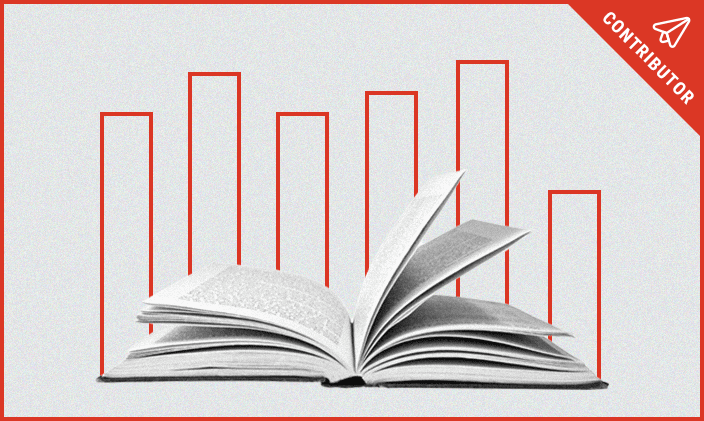What is design thinking?

Written by Michael Feder

Reviewed by Kathryn Uhles, MIS, MSP, Dean, College of Business and IT

Achieving a perfect product or service requires a certain way of thinking that takes these needs into account. To that end, many businesses rely on design thinking as their go-to method to make useful and profitable products. At its best, this method can save time and money, all while giving customers something they truly value.
What is design thinking? A definition
Put simply, design thinking is a process for solving business challenges that centers on the intuitive experience of the end-user. The solution may be adjusted over several iterations according to that experience.
Business challenges can range from launching a new product to creating a learning and development program. The end users, or stakeholders, can be customers, internal employees or even schoolchildren — anyone for whom the designed solution is intended. Regardless of who they are, analysis of the end user’s experience is what leads to improving solutions over time.
It may seem obvious that the stakeholder's experience should factor into design and implementation, but that isn’t always the case in practice. Many businesses spend months or years working on a new product or service and then deploy it with the hope it will be valuable to customers. They may not have the processes in place to adjust that offering after it’s been released and customers have had time to offer feedback.
Design thinking is more than a user-centric philosophy though. It’s a way of doing things. It requires implementing a step-by-step process to achieve a truly user-centric result.
What is the design thinking process?
The design thinking process is made up of six phases:
1. Empathize
2. Define
3. Ideate
4. Prototype
5. Test
6. Implement
Each phase leads into the next, but design thinking is an iterative process, meaning that earlier steps can be revisited because of the results of a more advanced step. The entire process is cyclical. The final implementation of a product may produce user insights that start the process all over again.
Step 1: Empathize
Gathering user insights is the first step of the design thinking process. In this step, it’s all about getting the pulse of the end users through empathy. Understanding their experience will form the basis of the steps that follow and will determine the success of the final implemented solution. Empathy is crucial to the design thinking process and arguably the most important step.
To give this process some context, let’s use the example of a recently launched product. Here are some important questions to answer during the empathy phase of the process:
- What are users doing with the new product, and what are they saying, thinking and feeling about it?
- What do end users like about the new product?
- What difficulties or obstacles are end users experiencing?
- How do end users feel when using the new product?
Research, whether in the form of direct customer input, aggregated data or end-user observation, helps answer these questions.
This phase is not called “research,” however. It’s called “empathize.” This is meant to emphasize the user-centric nature of design thinking. It’s crucial to put personal biases and assumptions aside, and truly see things from the end users’ perspective. That will provide better insights into how and where to improve the new product.
Step 2: Define
After conducting empathetic research in the first phase, it’s time to derive critical insights to define the problems the following steps will attempt to solve.
Here are some big questions that should be answered during the definition phase:
- Is there a common problem or obstacle faced by a number of different end users?
- What patterns exist in how end users utilize the product?
- What could be the origins of these patterns, problems and obstacles?
Answering these questions can help distill a singular problem statement from varied user experiences. Of course, user experiences are diverse and multifaceted, and several problems may emerge from the research. Breaking those experiences down into individual problem statements can make it easier to address them one by one.
Step 3: Ideate
It’s time to brainstorm. Ideation is the idea generation phase of the design thinking process, where creativity, innovation and freedom are driving forces in designing a solution for the stakeholder. When it comes to addressing the problem statement, no idea is outlandish or ridiculous (at least not yet).
During ideation, the product design team might lock themselves in a conference room with a big whiteboard and plenty of coffee. They will try to produce as many ideas as possible to address the problem, often mixing and matching ideas to produce innovative, creative solutions.
Some questions that should be answered in this phase are:
- Given no limitations on resources (or even feasibility), how can the problem statement be addressed?
- Are there biases the product design team may not have been aware of in the design process?
- How would the end-user experience a proposed solution? How would it feel?
By the end of this phase, the product design team may produce several feasible solutions to address the problem statement. They can then carry these ideas into more advanced phases of the process.
Step 4: Prototype
In this phase, ideas generated during the previous step are made concrete. By creating a prototype, or a primitive version of the definitive solution, it is possible to see how these ideas might work for the stakeholders.
When making the prototype(s), here are some important questions to answer:
- How feasible would it be to reproduce this solution at the necessary scale
- What constraints exist in the current prototype? Can they be addressed without scrapping the whole idea?
- What impact would this solution have if deployed?
At this stage, it can be helpful to get feedback from other employees whose insight is not affected by familiarity with the problem or solution.
The prototyping process may take a short or long time, depending on the project. One team might want to deploy a less-polished solution and improve it based on user input. Another team might spend a long time perfecting a prototype before deploying it to users.
Either way, by the end of this step, the product design team will have a solid plan on how to improve the end-user experience.
Step 5: Test
Having settled on a plan, it’s time for the prototyped idea to meet the stakeholders. This step’s research and data gathering may closely resemble that of the first step. The main thing is listening to how the end users feel about the solution. A team may have worked long and hard on a solution, but if it doesn’t solve the problem (or if it creates new ones) for the end users, then it may be time to go back to the drawing board.
Some important questions to answer during the testing step of the design thinking process are:
- Is there a noticeable change (positive or negative) in how the end users feel about the product?
- Does the prototype address the problem it’s meant to solve?
- Does the prototype solve or create other problems not previously considered?
The answers to these questions may send a team all the way back to the start of the design thinking process or to another preceding step. They will have to take the insights from this testing phase to improve the end-user experience. That may mean coming up with new ideas because the solution didn’t address the problem. It may also mean starting on new solutions to problems that weren’t previously clear.
Step 6: Implement
If a solution survives the testing phase and does address the problem statement in practice, then it is time to implement that solution. At this step, the tested prototype is tweaked and polished up. Then it can be implemented more broadly and permanently, freeing the design team to address new and different concerns.
That isn’t the end of the story, however. Even after implementation, data and insights may continue to filter through. As part of successful design thinking methodology, it’s important to take these insights seriously and address them head-on.
By the end of the design thinking process, the end user can enjoy a product or service that’s truly built around their needs and experiences. That can be very valuable. The team will have also learned skills and insights they can carry into their work beyond the scope of a singular project. For a business, that can also be very valuable.
Design thinking in business
As stated before, design thinking is not just about producing new products. It can be implemented as part of a broader business management strategy. By swapping out end-point consumers with company employees, managers can leverage design thinking processes to get their team working at their best.
When creating learning and development (L&D) programming for their employees, managers can use the design thinking phases listed above to guide them.
They might empathize with their employees by asking them where they are feeling unprepared or where they could see improvement. Instead of making a broad assessment from a managerial perspective, that manager can tailor the L&D programming around the actual lived experiences of their employees.
From there, a manager may have some idea about the L&D their employees need, but that’s just the beginning. Constantly gathering information is a big part of design thinking. Instead of implementing a set of mandatory lectures, a manager might decide on a more interactive approach, such as running L&D workshops in which employees can voice their ideas and thoughts while simultaneously learning new skills. Maintaining this open and collaborative atmosphere gives the manager opportunities to continuously improve future programming and secure the best results.
Design thinking has applications up and down the organizational ladder, from training new employees to brainstorming ideas in executive meetings.
Some benefits of design thinking in business are:
- Reduced costs and time to market
- Improvements in customer relationships
- Innovative and creative work environments
- Increased team morale and comradery
Design thinking in education
Design thinking is also useful in education. In fact, educators may find that applying a design thinking framework to their curriculum can help produce better outcomes for students. In fact, design thinking comes very naturally to teachers because they are constantly reflecting, improving, and iterating.
The example of a manager creating L&D programming has a lot in common with an educator creating a lesson plan for their students. A lecture may not always be the best plan when something more collaborative would serve the students better. Teachers demonstrate the empathy phase when they review their lesson plans from a “student lens.” This allows teachers to experience their lessons through their students’ eyes. Often, this is where teachers tweak lessons after discovering they failed to include enough formative assessment or engagement activities.
An early education teacher may, for example, exchange a slideshow on geography with an interactive puzzle map assembled by the students. Guided by the teacher, the students can debate the names and locations of countries, earning points or prizes for correct answers. By centering the student experience, teachers can implement design thinking in fun and engaging ways.
The positive effects of design thinking in education are potentially very powerful. Design thinking can help produce innovative and creative students who are experienced in problem-solving and collaboration. Feeling that their input matters can be empowering and inspire them to engage with their studies well into the future.
How to implement design thinking?
With all its applications, it’s easy to see why design thinking has become so popular for individuals and organizations in multiple fields and industries. But what does that look like on an individual level? Here are some ways you can implement design thinking in your life and in work.
Focus on people
Perhaps the most powerful concept in design thinking is just how personal experience takes center stage. Implementing design thinking means looking past the technical and listening to people. Individuals can help illuminate problems you may not have considered, reinvigorate stagnant or archaic processes, or highlight solutions you would never have considered.
A little gray is OK
The world doesn’t always provide clear answers to questions. That’s just life. Design thinking accepts that many things will be unclear until they’re tried out, and some things may never be clear. To move forward in the design thinking process, however, we have to propose the best solution to a given problem. Even if that solution doesn’t work, it can provide useful information for improving the next idea.
Be ready to revise
Design thinking encourages the iterative testing and revision of prototypes in response to end-user input. That might mean investing less time in perfecting a product before deploying it and focusing instead on continuous revisions. Negative user input isn’t necessarily a sign you did something wrong. Rather, it provides an opportunity to make a better solution and improve your skills in the process.
Design thinking opens the door to innovation and new ways of thinking about problems and solutions. This flexible framework can be helpful in a number of situations and provides a pathway to better end-user experiences.

ABOUT THE AUTHOR
A graduate of Johns Hopkins University and its Writing Seminars program and winner of the Stephen A. Dixon Literary Prize, Michael Feder brings an eye for detail and a passion for research to every article he writes. His academic and professional background includes experience in marketing, content development, script writing and SEO. Today, he works as a multimedia specialist at University of Phoenix where he covers a variety of topics ranging from healthcare to IT.

ABOUT THE REVIEWER
Currently Dean of the College of Business and Information Technology, Kathryn Uhles has served University of Phoenix in a variety of roles since 2006. Prior to joining University of Phoenix, Kathryn taught fifth grade to underprivileged youth in Phoenix.
This article has been vetted by University of Phoenix's editorial advisory committee.
Read more about our editorial process.
Read more articles like this:


